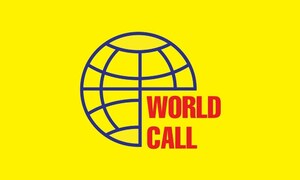Pakistan’s emergent default forecast derives its strength from the fact that it’s once negligible public debt of Rs 711 billion in 1990 has soared to Rs 52,721 billion by 2022, an increase of more than 70 times while its GDP increased by only 8 times during the same period; thus, vindicating the belief that this phenomenal increase in debt has been incurred to finance the current expenditure rather than economic growth or capital formation. This is precisely the reason why it has become unsustainable.
That Pakistan’s economy is on declining trajectory is amply reflected by its current account deficit of USD 18 billion while its exports have declined to 9.1 percent from 16.9 percent of GDP over the same period. Public borrowing is crowding out financing to the private sector and this position is reflected in balance sheets of the commercial banks whose asset exposure to public sector is in excess of 50 percent.
This is in contrast to the emerging market’s exposure on this account of 17 percent. Pakistan’s interest payments on debt are more than 52 percent of net tax revenue in comparison to world average of 6.2 percent, China’s payment of 3.9 percent, Greece’s 6 percent, US’ 14 percent and Bangladesh’s 21 percent. This makes Pakistan an economic basket case.
Despite jingoism, interest pedaling or the tendency to hide behind cross border problems to camouflage profligacy of governments in the power corridors, the fact is that it is all the governments during this period that are responsible for the present state of the country. To chart a way forward, it is imperative to first ascertain the reasons that have brought the national economy to the brink of collapse.
This is often attributed to over-spending and corruption by governments, but available empirical studies conclude that the emergent meltdown is inbuilt as Pakistan is simultaneously following the wrong governance and economic models. There are various governance models including even the ones which are intellectually forbidden for the states to adopt.
One such forbidden model was described by Plato 2500 years ago, which ordains that “national ruin comes when the trader becomes ruler or when the general uses his army to establish a military dictatorship; both of them are at their worst in public office”.
In present times this very theme has also been encoded by Lee Kwan Yew who created Singapore’s economic miracle. According to Lee, “no country has ever made progress where army holds the power”. For Pakistan’s governance model, Hillary Clinton describes Pakistan as a “deep state where army runs the government” and James Mattis, a former US Defense Secretary, in his book “Chaos” argues that the driving force in Pakistan politics is “self-enrichment” proving Prof. Schuemann appears to be right in predicting that Pakistani leaders’ “minds cannot function beyond-personal selfish ends”.
Thus, ‘the question arises whether Pakistan has been run under the forbidden governing model or not? If the answer is yes, then its governance model itself has “an active self-destructive streak in its political culture.” Mattis and others hold that the present governance model and Pakistan cannot coexist without misery for its people.
It is stressed that Pakistan is run by extractive unitary centrist authority, a federation only in name, thus the shrinking of center’s role in governing is most appropriate, giving all residuary powers to provinces with strong local governments to run districts and elections to be held under proportional representation eliminating electable groups prone to manipulation which is the minimum requirement for the way forward.
Suffice it to say that Germany, the most powerful European economy and Jews, the most advanced community, have adopted proportional representation for their countries or in Greece, the birth place of democracy, seat allocation to individual parties is done on the basis of their nationwide vote share, provided they have reached the electoral threshold of 3 percent. Then why not consider adopting this system for our country.
Moreover, renowned economists, including Atif Mian of Princeton University, argue that Pakistan’s economic model is fundamentally counter development. In this economic model, the most profitable investment option available to the investor is not manufacturing or value addition for exports/creative technology adoption, but it is the investment in land and real estate which is otherwise, strongly shunned by economists.
Furthermore, it is proven that government or official departmental business entities are monopolistic and inefficient; these are crowding out private businesses and thwarting initiative or innovation. This phenomenon is prominently prevalent in Pakistan’s model.
Economists do not recommend government in business or official controlled business and treat investment in real estate as “dead investment” as not exportable and incapable of bringing growth/innovation and devoid of multiplier effect in the economy. Thus Pakistan’s realty or official sector businesses enjoying preference/tax breaks are not creating economic growth.
Moreover, realty sector is making negligible contribution to revenue unlike other countries, say China, where land mix is a major source of revenue nearly tripling in the past decade to 8.4 trillion yuan (US$1.31 trillion) contributing up to 30 percent in revenue in China/Hong Kong. Similarly, in US, urban property is taxed @ $5 per $100 of assessed value and the “blighted”/undeveloped property is taxed higher @ $10 per $100.
(To be continued on Sunday)
Copyright Business Recorder, 2023
The writer is a Tax & Investment Consultant
Email Afzal@oaa.asis























Comments
Comments are closed.